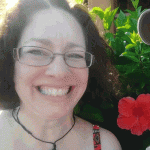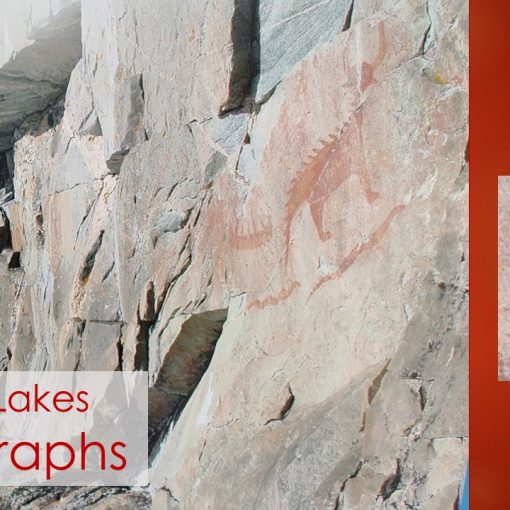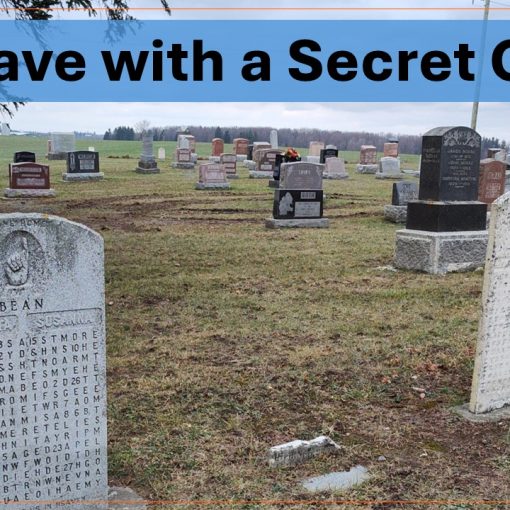The Great Lakes area holds many examples of human strength as well as sodden hardship. Sainte-Marie Among The Hurons Martyr’s Shrine is a unique site carrying powerful stories woven through centuries. This site had been the center for the Jesuit mission which had run from 1639-1649. The fenced facility and church have been reconstructed. Join Chuck and I as we visit this shrine and attend The First Light celebration of The Huron people.
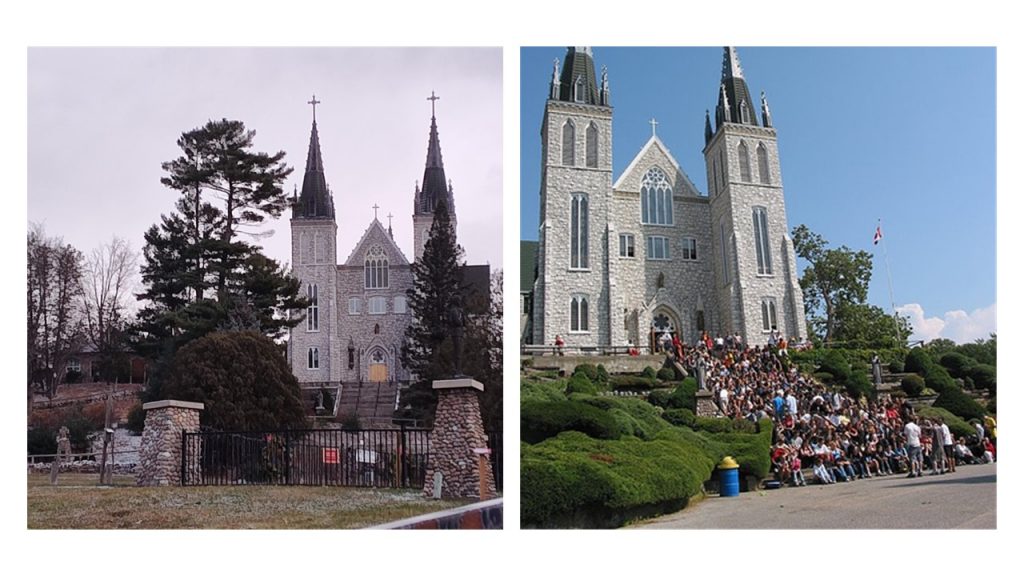
during the winter (left) and when pilgrims visit in the warmer months.
(right) Photo Credit: Sainte Marie Among The Hurons
Our First Visit
While on a trip to Midland, Ontario a few years ago we noticed a small crowd and a lot of lanterns being lit, so we had stopped to investigate. Small clusters of people reverently climbed the hill to the church grounds. As we’d entered the the church through the side door I was surprised to find it empty. We had the entire church to ourselves. “I think it’s closed.” Chuck side-eyed me, “But, you’re a Catholic, so it’s fine.” “We won’t stay long.” I reassured him and studied our surroundings. Groups of pilgrims had gathered on the grounds and at the nearby fort lit with candles.
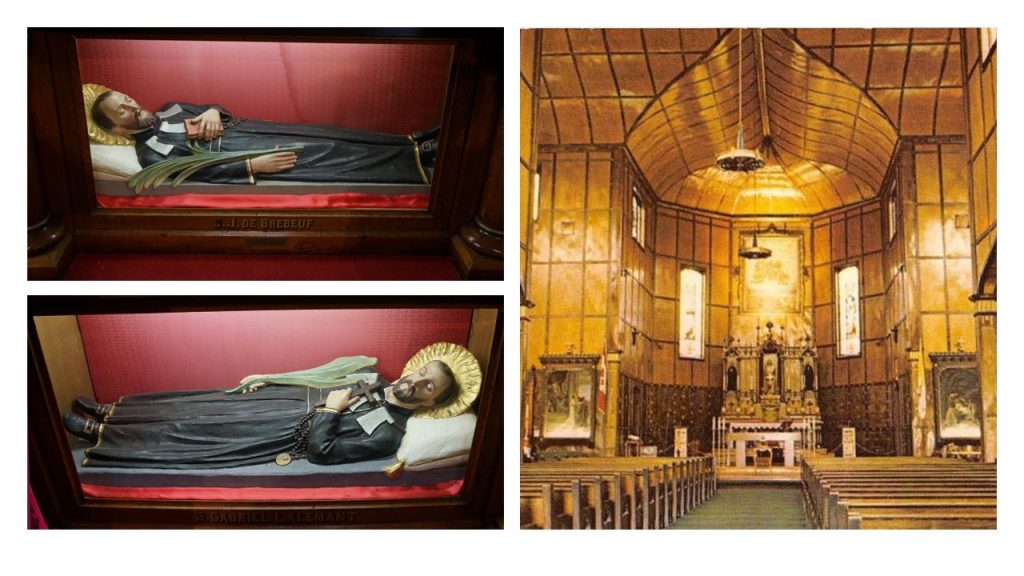
Father Gabriel Lalemant (bottom)
We’d been captivated by the canes and crutches displayed under a stained glass window and hung on the wall. Then we noticed two encased figures labeled “Brebeuf” and “Lalemant.” We were curious. Who were these ‘martyrs?’ How is the nearby fort connected? We returned on November 25, 2023 to find out. Join us!
The Shrine
Whether you personally hold a religious faith or not, North American history is interlaced with the native tribes and the Jesuit missionaries who had set up residence in hopes of converting native people to the European set of beliefs. This Catholic church is one of nine national shrines in Canada.
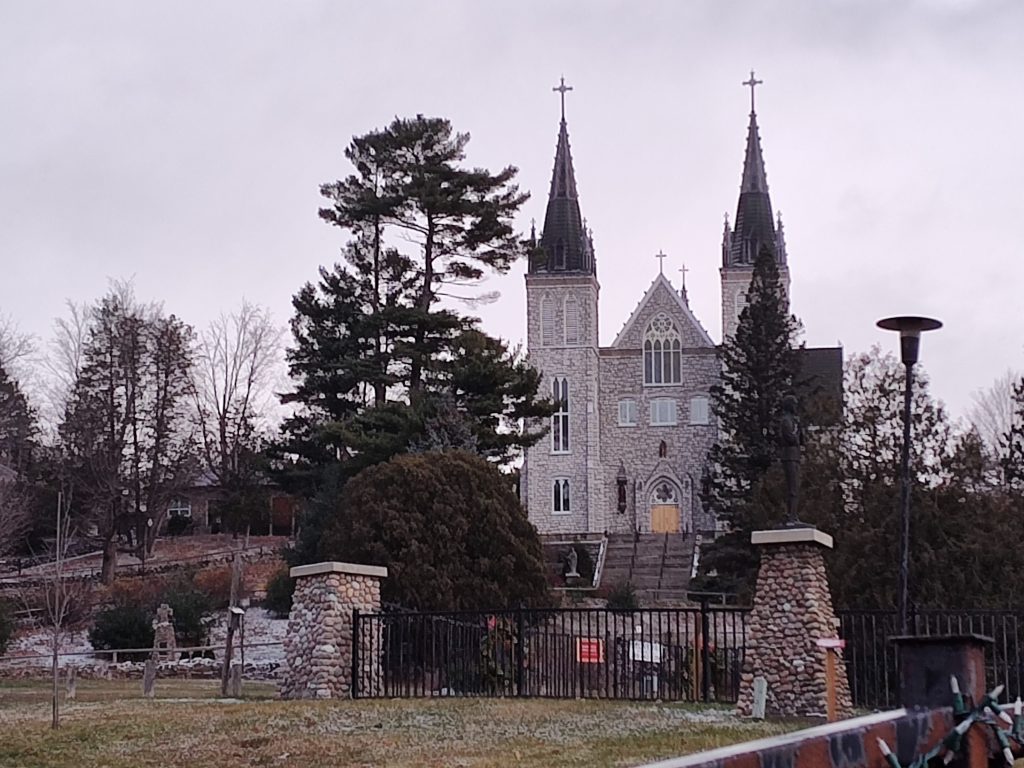
Six of the martyrs had been Jesuit priests and two were laymen.
About twelve miles from the original shrine, construction on this building began in 1925. A larger property had been needed to welcome over 100,000 pilgrims annually. This Catholic church had been designed by Father Filion, who had purchased the site from the Standin Brother’s farmland. Father Filion had hired ship builders to construct the Native and European styles. He had wanted everyone would feel welcome.
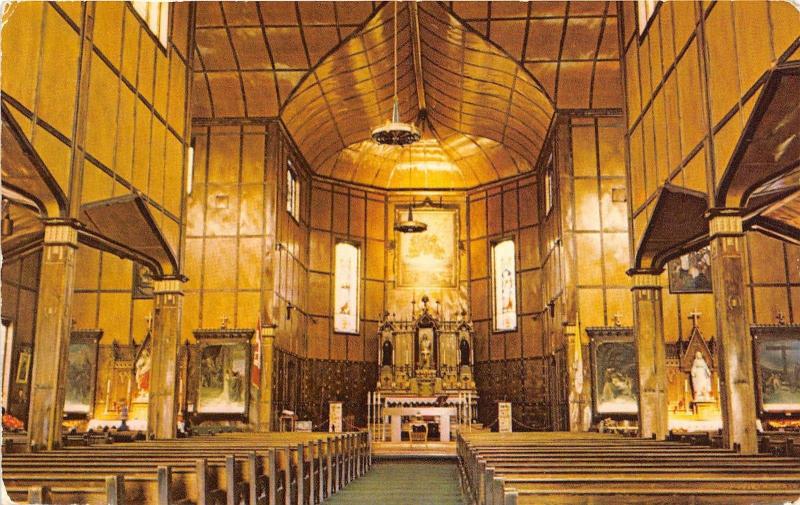
The outside contains the European Belgium-Gothic stonework with the structure’s floorplan in the shape of a cross. While the inside design compliments a long house and the rooftop slopes like an inverted bark canoe. While traveling by canoe during a rainstorm, one can huddle under an inverted canoe for comfort. Therefore, one could feel sheltered within the shrine. The building opened to worshipers in 1926.
Statues depicting Martyrs and Saints adorn the inside of the church as well as the vast grounds. The current leader of the church, Father Pat had said, “My wish is for families to have picnics on the land surrounding Sainte-Marie Among The Hurons.”
Relics
Relics are venerated by Catholics. A relic can be classified in three categories. A third class relic is an item that a Saint or Martyr had come in contact with. A personal item belonging to a Saint or Martyr is known as a second class relic. A first class relic contains actual remains of the individual.
First class relics are a feature of this Shrine. Half of Jean de Brebeuf’s skull is on display at the church. The other half remains in Quebec. A decorative case called a Reliquary contains some bones of Jean de Brebeuf, Gabriel Lelamant and Charles Garnier.
People travel great distances to pray over these relics for God’s blessings and healing. Priests use the relics to perform general blessings over the crowd of parishioners and personal blessing to individuals lined up following mass, the Catholic service of worship.
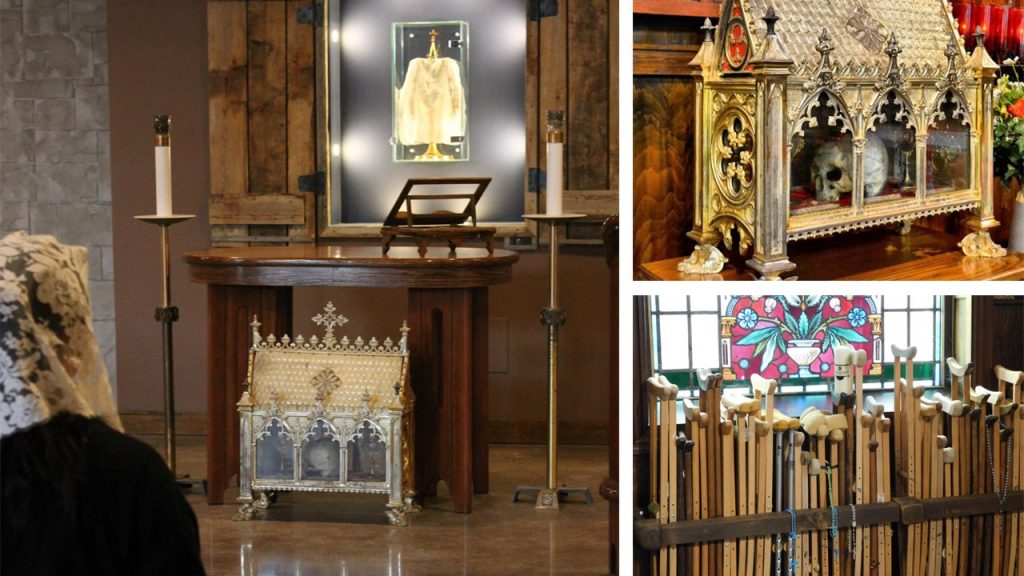
Crutches and canes have been left standing along the wall as mementos of healed visitors’ faith.
Photo Credit: Martyr’s Shrine
How Did This Jesuit Mission Begin?
Let’s take a look back to the 1600’s and learn how the French had explored the St. Lawrence River area which had been occupied by the Wendat (Huron) and Iroquois tribes. The Museum of The Huron had recorded that there had been 400 Wendat villages with 30,000 souls living in the area at that time. How did the French come and settle here?
Étienne Brûlé
It had started with an 18 year old, Étienne Brûlé, who had traveled from Paris, France to explore the St. Lawrence River. This journey had led him to Wendat villages. Upon meeting these tribes Etienne’s admiration of the people took hold and he had named them “The Huron” with affection. “Huron” means ‘boar’s head’ and ‘rough’ referring to the male’s bristly hair style and resilient demeanor.
Etienne immersed himself in the Wendat culture, learned their language and lived among The Hurons from 1610-1615. Étienne Brûlé had successfully connected the Huron and the French with a recorded 15,000 beaver pelts being delivered to Quebec. In 1615 Etienne Brule continued his explorations to the Lake Erie area.

Photo Credit: The Toronto Sun
Samuel de Champlain
In 1615 Samuel de Champlain came to the region on an expedition. He described eighteen villages of Wandat-Huron peoples with 13,000 souls. (In contrast the museum of Huron had recorded that there had actually been 400 villages with 30,000 people.) Champlain wrote of The Huron’s long ‘cabins’ having many fires and up to 24 families living in a single structure.
Jesuit Mission – Sainte-Marie Among The Hurons
Wanting to convert the Wendat-Huron people to faith in God and the resurrection of Jesus, Jesuit priests had followed Champlain’s route and had constructed one large building to serve as a respite for local villagers in 1639. They had expanded their community to include a black smith, storage and homes. A fence had been constructed around the settlement as protection, mainly from Iroquois attacks.
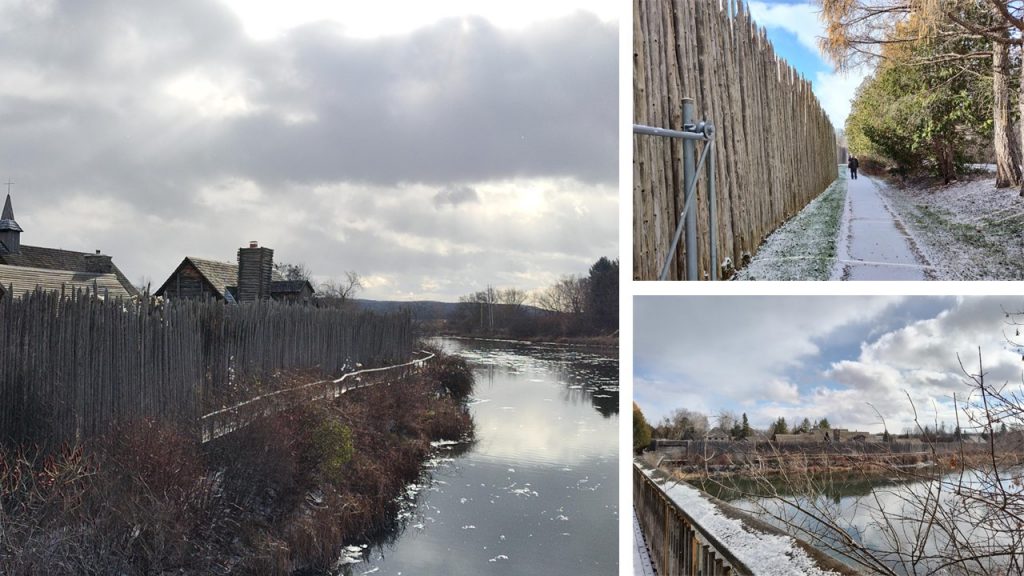
Area Wendat-Huron people would stay for a few days at the long house to receive care and ministry.
By 1648 there had been 66 Frenchmen living at the fort. At that time Father Paul Ragueneau had written Jesuit reports, which had been sent to Quebec, recounting disturbing descriptions of Iroquois attacks.
Father Brebeuf had written in reports that the Wendat-Huron people felt unsure about believing in one God and everlasting life in Heaven. He quoted the Hurons in his letters. “Such is not our custom; your world is different from ours; the God who created yours,” they say, “did not create ours.”
In daily life the Jesuit priests had often asked the Wendat-Huron people to be more quiet and reserved. Their response had been, ‘you should talk to the bird (the rooster) before talking to us about being noisy!’
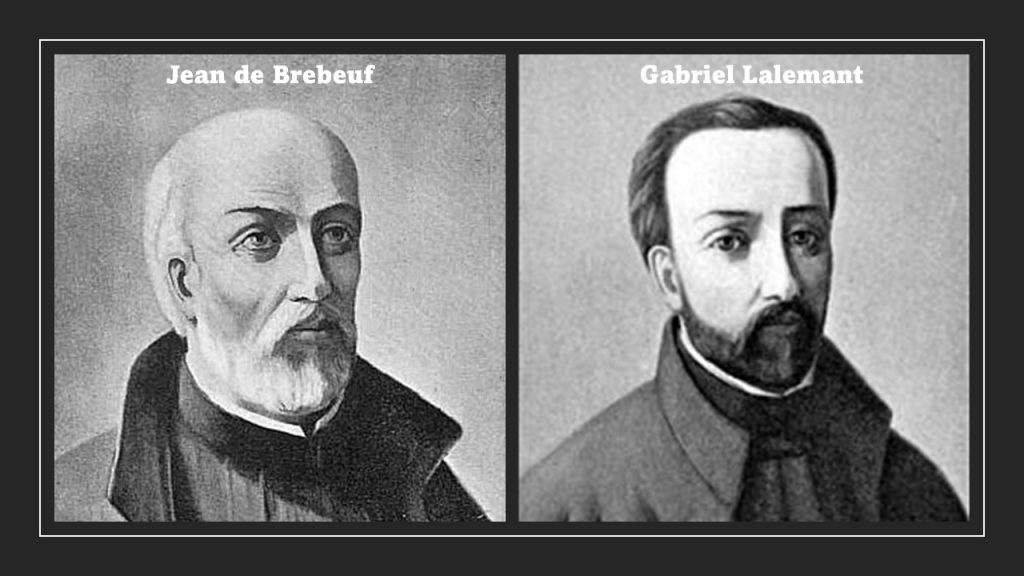
In another letter Father Brebeuf had proudly reported, “We have baptized more than two hundred this year.” In a note written by a different priest he had quoted a Huron’s response to being baptized. “For my part, I have no desire to go to heaven; I know no one there, and the French who are there would not care to give me anything to eat.”
The difference in child-rearing had caused rifts, too. The youngsters of native tribes had always been permitted to freely explore within the village where everyone helped look after them. In contrast, the missionaries had wanted to teach these youngsters using formal methods of quiet lessons while expecting the children to sit still. Needless to say, this method of instruction, which had included strict punishments of physical swats, hadn’t been well received by members of the tribe.
The worse issue of all had been ‘the pestilence,’ an unexplained illness, which had killed many in the Wendat-Huron and Iroquois communities. The Iroquois tribes had risen up in anger toward the French as they blamed these outsiders for this deadly illness brought upon their people. Small Pox had most likely been the culprit.
Waubaushene – Site of Martyrdom
The Iroquois had become so enraged with these French intruders, that they tortured and killed priests of the mission. For hours Jean de Brebeuf and Gabriel Lalemant been tortured at this shoreline site, Waubaushene, with knives, fire, boiling water, heated tomahawks and scalping.
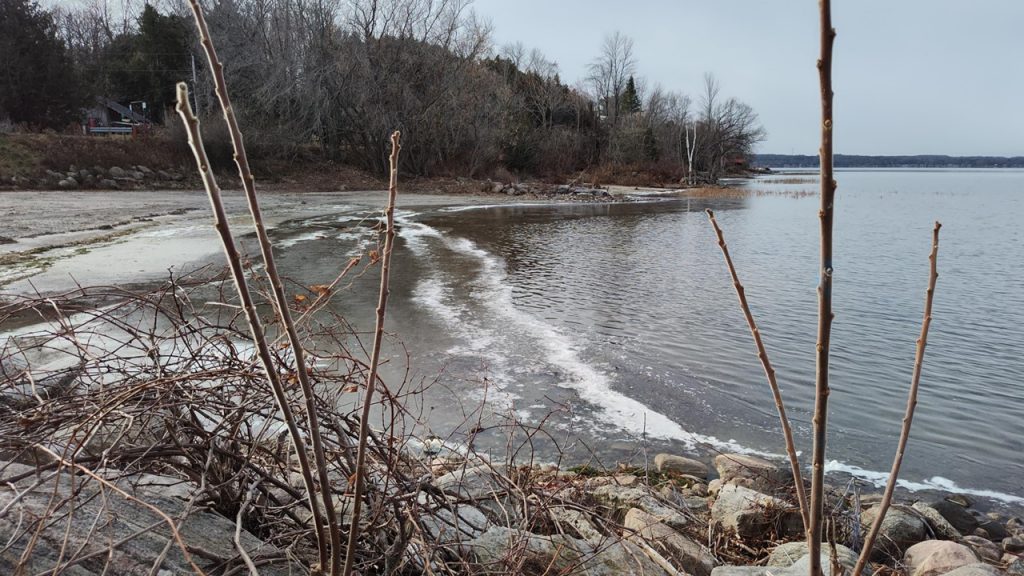
were brought here by the Iroquois.
In addition to Father Brebeuf and Father Lalemant, four other priests and two lay persons had been murdered by the Iroquois: Antonine Daniel 1648, Isaac Jogues 1648, Noel Chabanel 1649, Charles Garnier 1649, and two lay Jesuits: Rene’ Guopil and John Lalande.
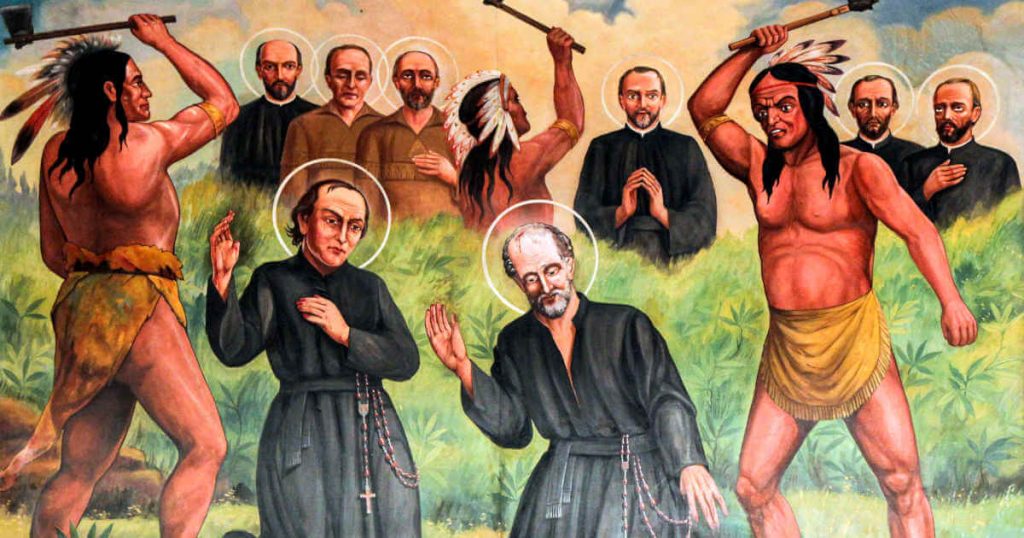
Photo Credit: My Catholic Life
With fear of further Iroquois attacks, the remaining Frenchmen had decided to flee the mission and retreat to St. Joseph Island. (Now known as Christian Island.) These men had reverently defleshed the bodies of Father Jean de Brebeuf and Father Gabriel Lalemant and buried their flesh. Then they wrapped their bones in a blanket to bring with them before burning down the mission, Sainte Marie Among The Hurons.
What Is A Martyr?
Thomas Aquinas had explained, “The martyr chooses to give witness to the reality of God over his own life.” According to the Catholic church a Martyr endures tremendous torture, but continues to proclaim the Resurrection of Jesus Christ.
Even after a display of bravery, one isn’t canonized as a Martyr or Saint right away. It often takes decades or even centuries of gathering a collection evidence before the Pope declares the individual as a Saint or a Martyr. (In order to become a Saint, one needs to have performed at least two miracles.)
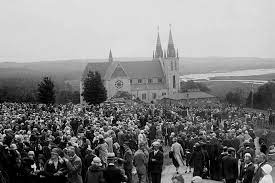
Father Jean de Brebeuf and Father Gabriel Lalemant along with the six others had been finally canonized as Martyrs by Pope Pius in 1930. The Pope had conducted the ceremony in Rome while pilgrims had gathered outside on the grounds of the Martyr’s Shrine church at the 12th station of the cross.
Graves Located
After centuries of this land being known as ‘the French ruins,’ that the graves of Jean de Brebeuf and Gabriel Lalemant had been located during an archeological dig in 1954.
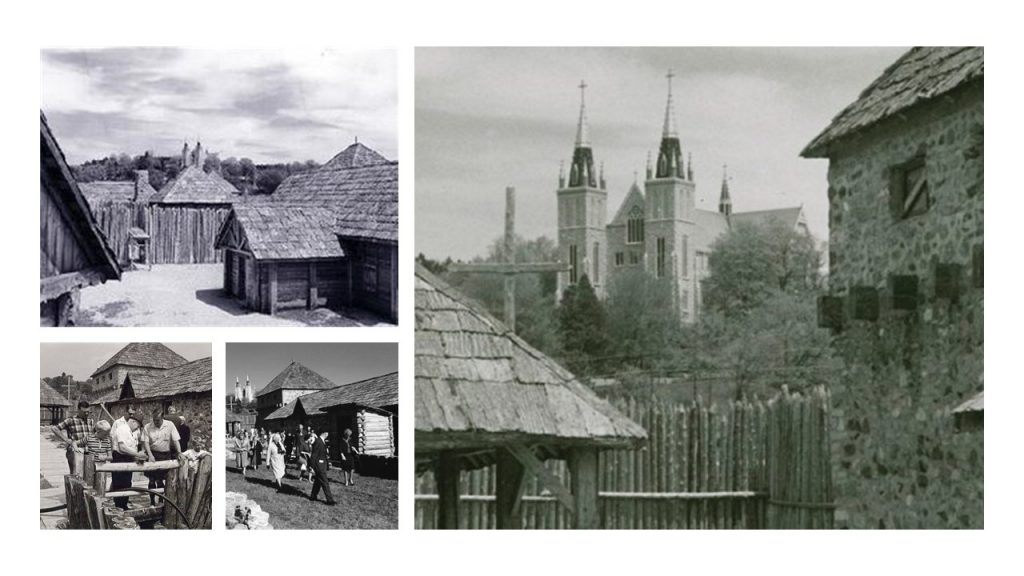
This discovery had sparked an interest in honoring these Martyrs and preserving the Wendat-Huron history at this site as fewer than 10,000 decedents had remained. By 1964 the project of reconstructing Sainte-Marie Among The Hurons Jesuit Mission had begun. In 1967 the site opened with 22 reconstructed log buildings surrounded by a fence.
Our Visit To The Gravesites
Father Pat, the current priest of the Martyr’s Shrine church, had been standing next to the graves when we toured the fort. In a hushed tone he explained that the bodies of Father Brebeuf and Father Lalemant had been exhumed, boiled which removed the flesh from the bones, thus preserving the bones. The flesh had been reburied at this original site.
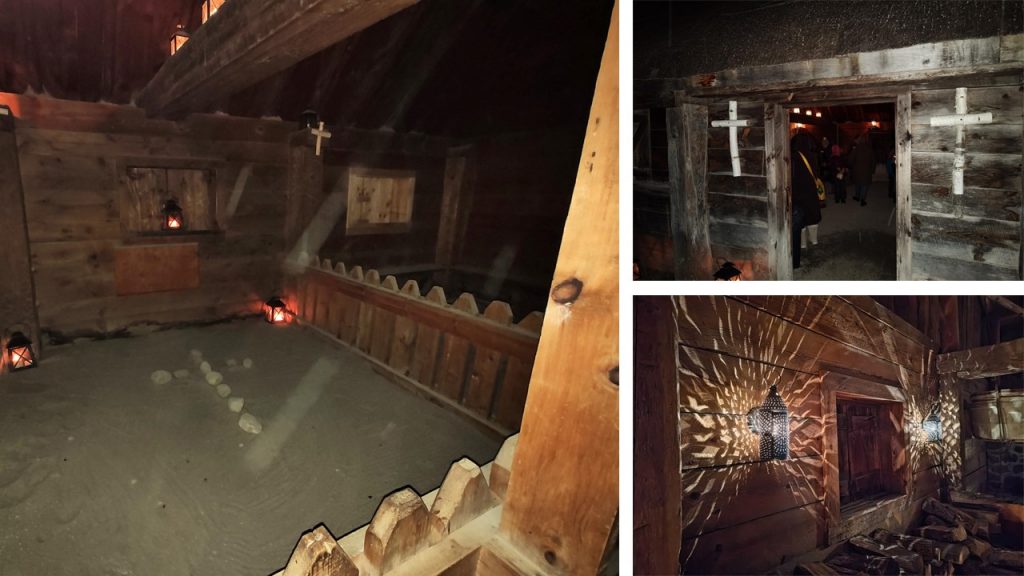
This had sparked an interest in rebuilding the Jesuit Mission.
First Light Celebration
Embracing the Wendat-Huron culture volunteers hosted guests demonstrating life at the mission. Annually, “The First Light Celebration” takes place on weekends in November. One can experience life as it had been in past centuries.
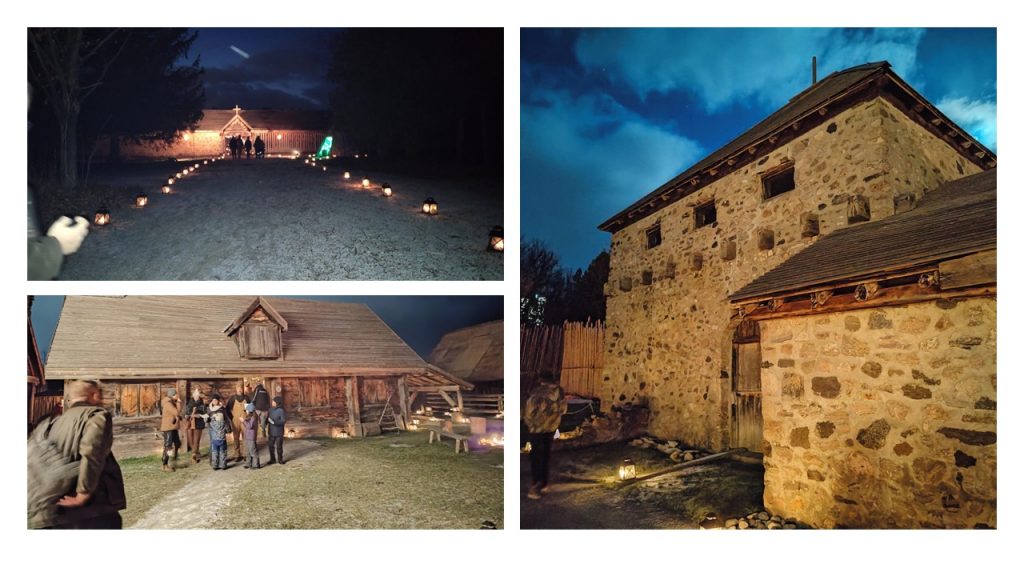
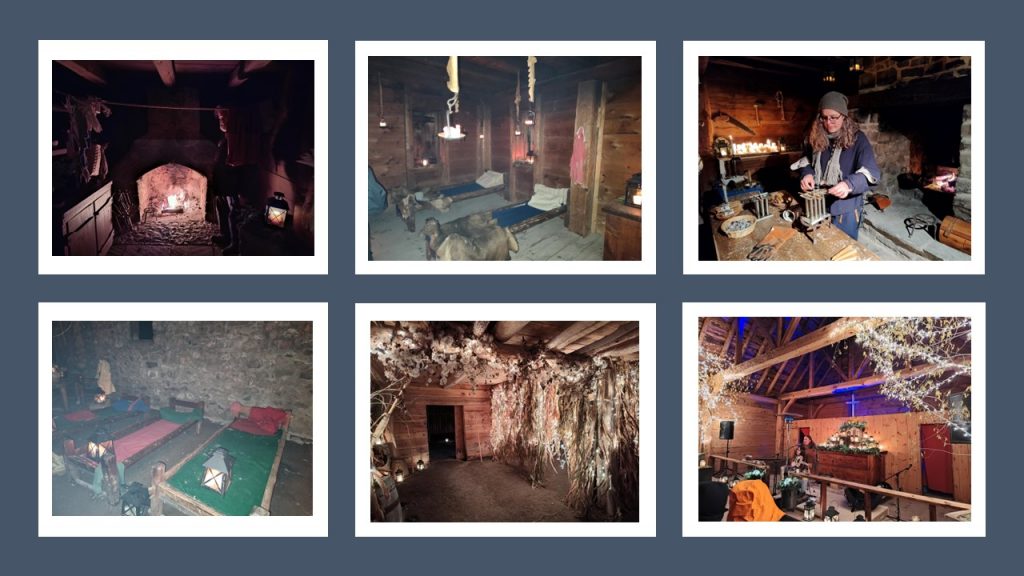
It felt as though we’d stepped into the mid 1600’s.
At one side of the settlement we had heard thick, thunderous rolling vocalizations accompanied by the beat of drums. The air vibrated had outside the longhouse. I couldn’t wait to see what was happening inside. We entered through an opening draped with furs. Smoke filled our nostrils as we made our way through the hanging herbs.
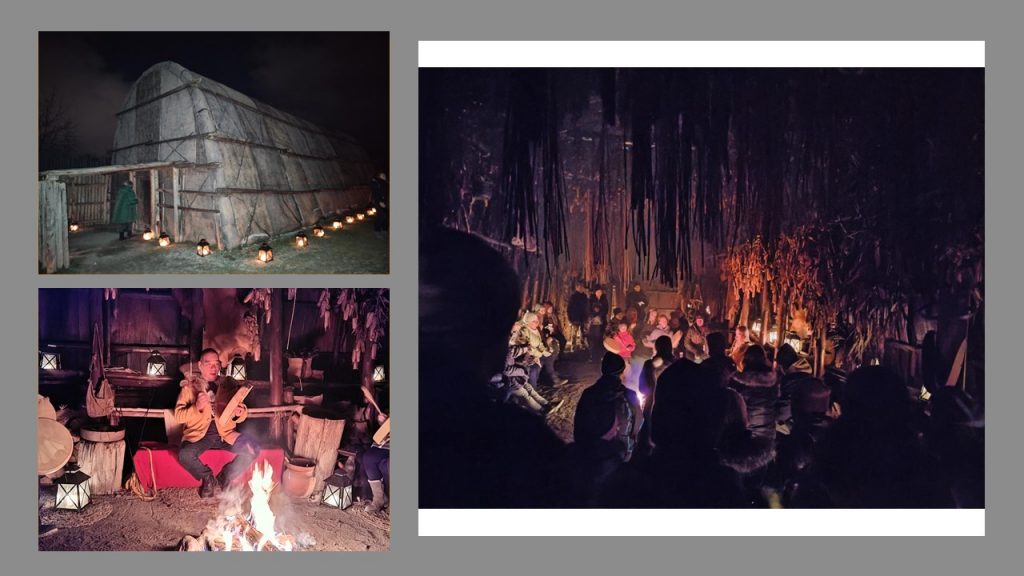
Right Photo Credit: Sainte-Marie Among The Hurons
In the center benches surrounded a fire with the smoke crawling through a slit in the roof. A solitary elder invited children to join him and pick up one of the animal skin drums. He had explained that usually the Wendat songs had used a two beat pattern, like a heartbeat. But tonight they would do a single, strong beat. He set the beat and invited the children to join in. Simultaneously the group created a monotonous tone. Then he started to sing.
His single voice elongated vowels which had danced over the beat of the drums. The Wendat-Huron language filled the longhouse. It had been centering and peaceful, authentic and filled with meaning which had threaded its way through centuries.
I continue to carry the honor of having connected to those who’ve come before me. I encourage you to watch the video of our visit to Sainte-Marie Among The Hurons in the link below. Stay curious, connect with others and make memories!
Related Links:
Whispers from the Past: History of Ste. Marie Among The Hurons Restless Viking video
McGulpin Rock had been recorded as an aid to navigation by Etienne Brule, the first European to cross the Straits of Mackinaw.
Here’s our visit to McGulpin Rock – video.
Restless Viking merchandise is available.
Resources:
Martyr Shrine virtual tour video
Catholic Answers – Relics

